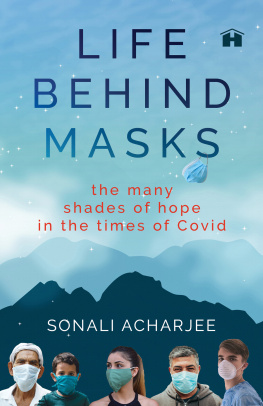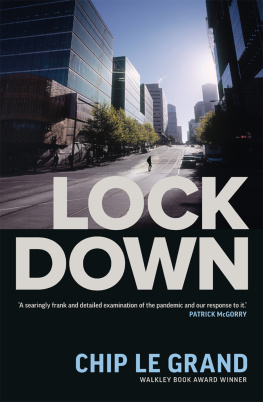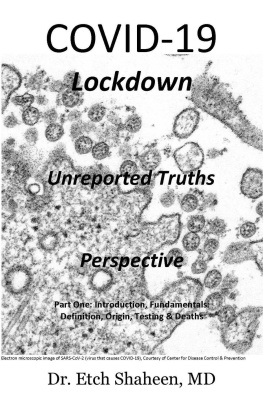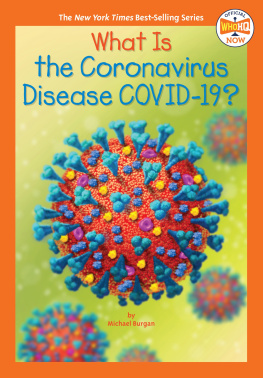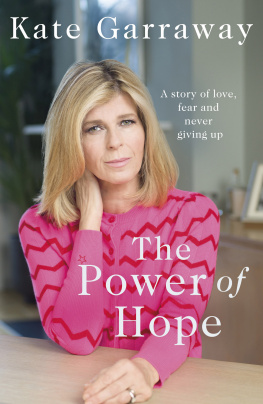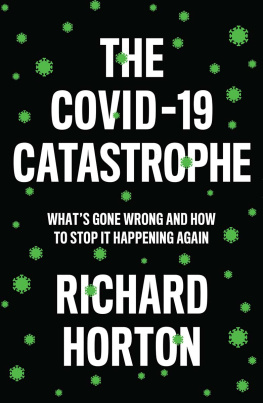Hay House Publishers (India) Pvt. Ltd.
Muskaan Complex, Plot No.3, B-2 Vasant Kunj, New Delhi-110 070, India
Hay House Inc., PO Box 5100, Carlsbad, CA 92018-5100, USA
Hay House UK, Ltd., The Sixth Floor, Watson House, 54 Baker Street, W1U 7BU, UK
Hay House Australia Pty Ltd., 18/36 Ralph St., Alexandria NSW 2015, Australia
Email:
www.hayhouse.co.in
Copyright 2020 Sonali Acharjee
The views and opinions expressed in this book are the authors
own and the facts are as reported by her. They have been verified
to the extent possible, and the publishers are not in any way
liable for the same.
All rights reserved. No part of this publication may be reproduced,
by any mechanical, photographic, or electronic process, or in
the form of a phonographic recording, nor may it be stored
in a retrieval system, transmitted, or otherwise be copied for
public or private use other than for fair use as brief quotations
embodied in articles and reviews without prior written
permission of the publisher.
ISBN 978-93-88302-48-7
ISBN 978-93-88302-49-4 (e-book)
For my Kaku
Contents
Chapter 1
When Amal Was Born
Chapter 2
What Is Plasma?
Chapter 3
He Is My Father
Chapter 4
Familiarity in the ICU
Chapter 5
A Journey through My Journal
Chapter 6
Me against the Media
Chapter 7
Doctor or Wife?
Chapter 8
The Day I Dropped Him Off
Chapter 9
And Then She Was Gone
Chapter 10
Would You Like an Apple?
Chapter 11
The Pages of My Quran
Chapter 12
A Good Girl
Chapter 13
Amongst the Jasmine Flowers
Chapter 14
Grandfathers Pen
Chapter 15
Twelve Journeys
Chapter 16
How to Stop Hugging
Chapter 17
Hard Caramel
Chapter 18
Surya Namaskars in the Dark
Chapter 19
A Dose of Covaxin
Chapter 20
A Girl and Her Screwdriver
Chapter 21
When Khushi Cried
Into the ward
When I was 11, my maternal grandfather gifted me his dictionarythe 1891 edition of The Chambers Dictionary which he had received from his uncle at the age of 14. It was, and remains, hardbound in thick grey cardboard. I spent days thumbing through its faded pages, discovering words that felt right to me. I loved the sound of Socinian, litholapaxy and femerell. I never knew exactly why, but back then I felt the syllables rolled off my tongue in a way a good word should. All along, I thought I was reading for fun, but with each word I loved, I gained a new understanding. Fanatic was one such word I came across. Over the years, I would encounter various stories and experiences that would gently nudge my brain to remember the word. There was the Mad Hatter in the 2010 cinematic version of Alice in Wonderland. There were the lyrics of David Bowies All the Madmen. There was the time I saw a drunk man attempt to escape the police in London, and a time a mother lost her son at a crowded temple in Chennai. For all these moments, fanatic would be one of the thoughts racing through my mind. The last time this happened was when I visited a Covid-19 ward on 4 May 2020, at the Lok Nayak Jai Prakash Narayan Hospital in New Delhi.
It was a furiously hot day. I pushed through the harsh golden light as I moved towards the hospitals Covid isolation block. A month ago, the Delhi Government had converted the entire hospital, including what used to be classrooms, to a 2,000-bed Covid-dedicated facility. The day I was there, around 500 patients were under observation. They displayed a variety of symptomsfrom a mild cough and fever to severe lung inflammation. I wasnt afraid of entering the floor where patients with mild symptoms were being treated. I wasnt afraid at all. The fear only came after I walked in.
All my life I had believed fanatic to be a word for actionthe manner in which a person responds to a situation. Inside a Covid ward, I felt it to be a way of life. The hall was black with gloom. As I entered, one attendant wheeled a trolley towards me. The slow creaking of its wheels had a rhythm which matched the attendants sing-song voice when he asked me to move out of his way. Over his mask, I saw two eyes wild with joy as he inched out of the darkness of the ward and into the glow of the sun.
Every room had a large glass window through which you could look inside. Each framed a different picture of slow, utter monotony. If you paid enough attention, the meaningless movements began to feel deranged. There was an old woman sitting cross-legged on her bed. The blanket was bunched up at her feet. Her hands were on her knees and she kept on rocking herself back and forth. In the room opposite her, a young boy lay on the bed with his hands up and touching opposite fingers to one another. Again and again, he separated his fingers and then gingerly pressed them back together. A few rooms away, I observed a middle-aged man looking at the wall clock. I stared at him for ten minutes and had the distinct belief that his eyes were observing the second hand. One of the patients was reading, but he never turned the page in the 10-15 minutes I spent watching him. There were sounds in the ward which added to the sense of light madnesshacking coughs, little giggles, deep sighs, the clucking of a tongue and the knock of a fist against a wall.
However, there was one common factor between each one of them in the wardeverybody was waiting for the unknown. They did not know when the doctor would arrive next. They did not know when they would see their families again; hold hands with their children or parents and sleep in their own beds. They did not know when it would be their turn to be wheeled into the ICU (Intensive Care Unit), perhaps never to return, as they had so often seen happen to many other patients. Broken bits of conversation from that day still remain with me:
I dont know what I am waiting for.
Are you the doctor? You are very young.
Should I leave a will for my property? Can you get me a lawyer?
That clock is not working. The minute hand is not moving.
I am feeling breathless. But I can breathe.
Can somebody please tell me if I am going to die?
What happens to those who leave this place on a stretcher?
I am being imprisoned here... The test is wrong... I saw it on the news.
What connected all these people was their wait for the unknown. Their entire existence depended only on one query writ large on each face: to determine if they would be taken home or to the ICU. The sheer force of uncertainty and anxiety was so harsh that it had turned their words, their bodies and their movements into an obsessive, aimless state. The women, especially, seemed to be in a daze. Many of them mentioned that they had never been alone before. Some of the patients did not own a mobile phone and they lay in a room with no connection to the world they had once belonged to.
Doctors said they gave each and every patient a daily update. But with a disease as unpredictable as Covid-19, there was no guarantee when things could take a turn for the worse. And more importantly, there was no cure. Every single person in the ward was infected with a virus which could not be treated and whose long-term impact on a patients health still remains unknown. Time and conversation were meaningless. Hope was not palpable. Only a fanatical wait for the unknown remained.
I visited a total of four Covid wards in the summer months during the country-wide lockdown. Then onwards, a feeling of an obsessively purposeless existence followed me everywhere. On the surface, nowhere did I find hope or the desire to hold on, making me seriously wonder if it existed at all. Striking a conversation with someone on a hospital bed was deeply disconcerting and during two of my four visits, I kept my distance. Yet, the only way to break through the hollow outer shell was to speak to people. Courtesy was all I had to gain trust in a matter of seconds. I remember my first full interview with a Covid positive woman. She spoke to me for a while, gave me her phone number and said to call her if she was ever back home. Another told me to get lost. But many also opened up.

